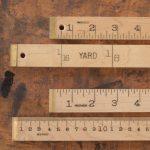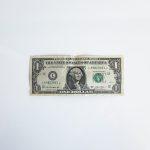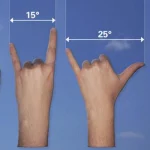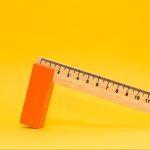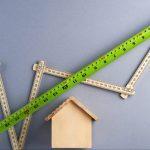Reading A Ruler: Everything You Need to Know
Most people would reach for a ruler online or offline when measuring something. Rulers are one of the most basic and essential tools for measuring, so it’s important to be able to use them properly (skip straight to the reading a ruler instructions).
So, whether you’re just starting out or looking to brush up on your skills, read on for all the information you need to know about how to read a ruler!
Related: Printable Ruler In Cm: Make it Yourself, Printable ruler in inches with free download and tips, Printable Measuring Tape: Do It Yourself,
Summary
- How do you read a ruler?
- What do the lines on a ruler mean?
- What is the easiest way to learn reading a ruler?
- Where do you start reading a ruler?
- How long is a ruler?
- How do you use a ruler properly?
- Why is it called a ruler?
How do you read a ruler?
Reading a ruler may seem like an easy task, but it can be a little confusing if you’re not sure how to do it. The trick is to use the lines on the ruler to measure the size of the object you’re measuring.
The first line (the one closest to the ruler’s edge) is usually the smallest unit of measurement. The other lines are spaced evenly apart and represent larger units of measurement. To measure an object, place it so that one edge touches the line on the ruler that corresponds to the object’s size. Then, count the number of units between that line and the ruler’s edge. That number is your measurement.
What do the lines on a ruler mean?
The lines on a ruler, such as a printable ruler in cm, help you measure things accurately. In general, the lines get thicker as they get closer to the edges of the ruler. The most important line on a ruler is the one in the middle, which is usually divided into inches and centimeters.
If you’re looking to measure something in centimeters, then you should line up that number with the line that’s marked with centimeter measurements. If you’re looking for inches, then line it up with the inch measurements instead. Many rulers also have smaller divisions along the edges, which can help measure smaller objects.
What is the easiest way to learn reading a ruler?
If you’re just starting out, it might be helpful to practice reading ruler measurements in small increments. For instance, try reading centimeter markings from 0 to 10, and then work your way up.
You can also try reading millimeter markings from 0 to 100. This will give you a sense of how the numbers are positioned on the ruler and help you develop a more intuitive understanding of the scale. Another way to improve your rule reading skills is to use a ruler that has both metric and imperial measurements. This will give you a better sense of how the two systems compare. With a little practice, you’ll be able to read any ruler with ease!
More about reading a ruler or tape measure explained (video)
Where do you start reading a ruler?
Start by lining up the 0 on the ruler with the edge of whatever you’re measuring. Then, read the numbers to the right of the 0. The number on the left is always smaller than the number on the right, so you’ll always want to read from right to left.
If you’re looking to measure in centimeters, make sure to line up the 1cm mark on the ruler with the edge of what you’re measuring. Easy enough, right? You can also use a ruler calculator to make things even much easier and faster.
Do you start from 0 or 1 on a ruler?
The short answer is: it depends. When you’re looking at an imperial ruler (the most common type in the U.S.), you start from the right (or the top, if you’re holding it upside down).
This is because the first line on the ruler, say printable ruler in inches, is actually at 0 inches (or 0 cm). You start from the left on a metric ruler because the first line is at 0 cm. Confusing, right? If you’re ever unsure, just remember that on an imperial ruler, the first line is at 0 and on a metric ruler, the first line is at 0 cm.
Do you start from 1 on a tape measure?
When measuring something with a tape measure including printable measuring tape, you always start from 0. (The number 1 is usually just the mark for the beginning of the next foot or inch.) So, if you’re measuring the length of something, you would start at one end and read the number at the other end.
If you’re measuring an object’s circumference (aka its diameter), then you’d wrap the tape measure around it and read the number where it overlaps.
How long is a ruler?
A ruler is typically measured in inches or centimeters. Inches are divided into 1/8th inch increments, and centimeters are divided into millimeters. There are 10 millimeters in a centimeter, so you can divide millimeters by 10 to get the equivalent number of centimeters.
How do you use a ruler properly?
To measure the length of an object properly with a ruler, place the edge of the ruler against one end of the object and line up the zero mark on the ruler with one end of the object. Then look at where the other end of the object lines up on the ruler and that’s your measurement!
Learn reading a ruler (inch ruler or tape measure) easily (video)
Why is it called a ruler?
The word “ruler” is derived from the Latin word “regula”, which means “straight edge”. A ruler is a tool used to measure or rule straight lines.
Conclusion
A ruler can be a valuable tool for measuring big and small things. But, to use a ruler effectively, you must first learn how to read it, for example how to read a ruler in inches decimals.
If you want to teach instead you can dig deep into how to teach reading a ruler. Be sure to learn everything you need to know about reading a ruler, including how to measure inches and centimeters, how to find fractions on a ruler and more.
Picture in this post by William Warby on Unsplash
Related to Reading A Ruler/House Size Charts
- Barbie Doll Size : What are different sizes of Barbie ?
- Blanket sizes chart : blanket sizes and dimensions in inches & cm
- Tablecloth size chart – What are standard tablecloth sizes ?
- How Many Meters Are In A Yard?
- How Many Centimeters are 8 Inches?
- Knife Sizes and Different Types
- 4 Inches is How Many Centimeters?
- Light Bulb Base Sizes : What size light bulb base do I need?
- Tesalate Towel Size Guide
- Light bulb Size : What are the different and standard bulb sizes?
- Duvet Sizes: What is a Standard-Size Duvet?
- Single Car Garage Size and Dimensions
- How High Is A Story?
- How Much Does 1 Cup Of Rice Weigh?
- Cast Iron Skillet Sizes: What Size Do I Need?
- Dollar Bills Size Chart
- Pizza Sizes: Which One to Order?
- How To Measure A Foot Without A Ruler
- Wine Glass Size Chart
- Tiny Houses Size Charts
- How Many Inches Are In 20 Centimeters?
- How To Measure 1 Meter Without A Ruler?




